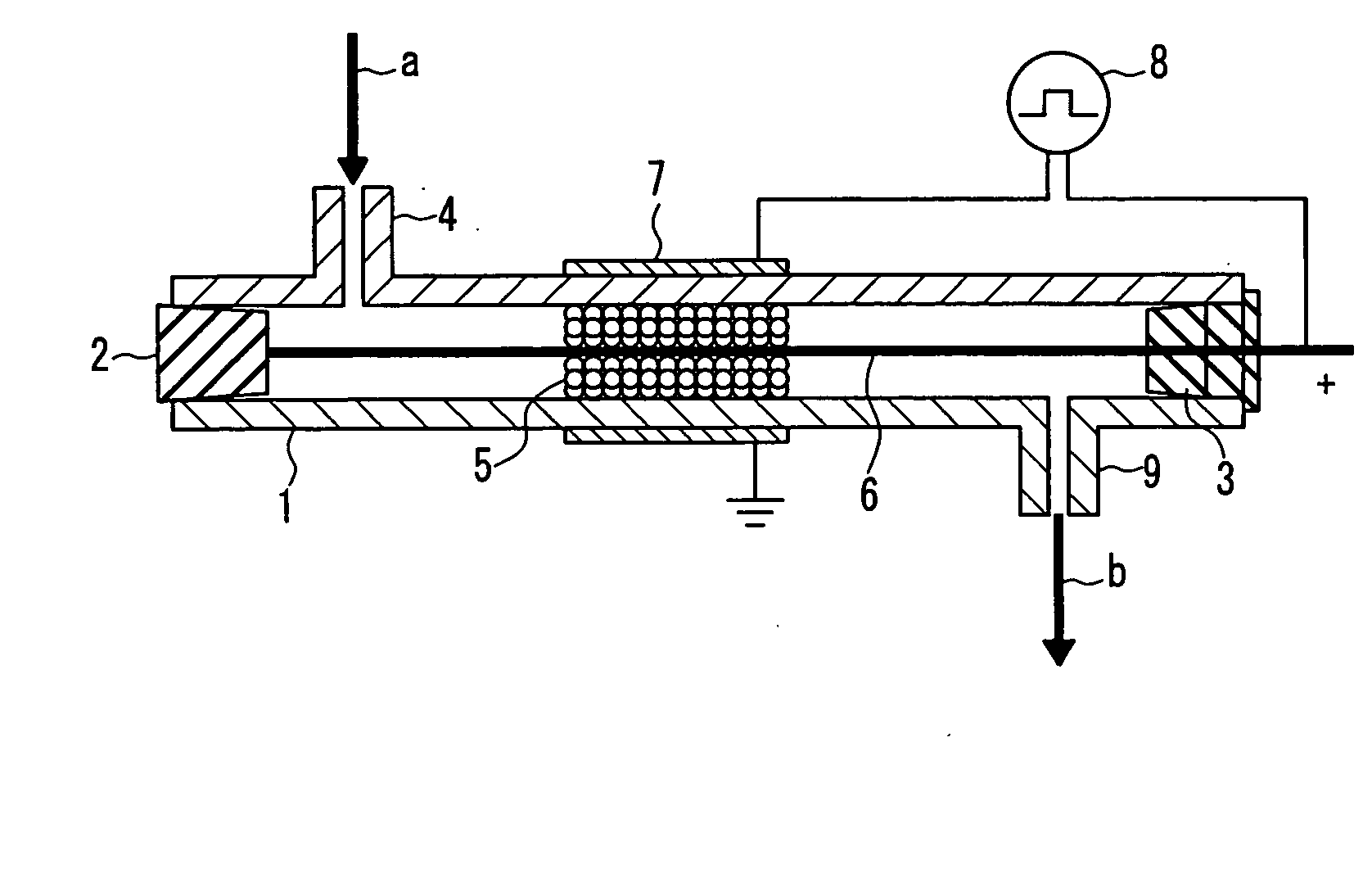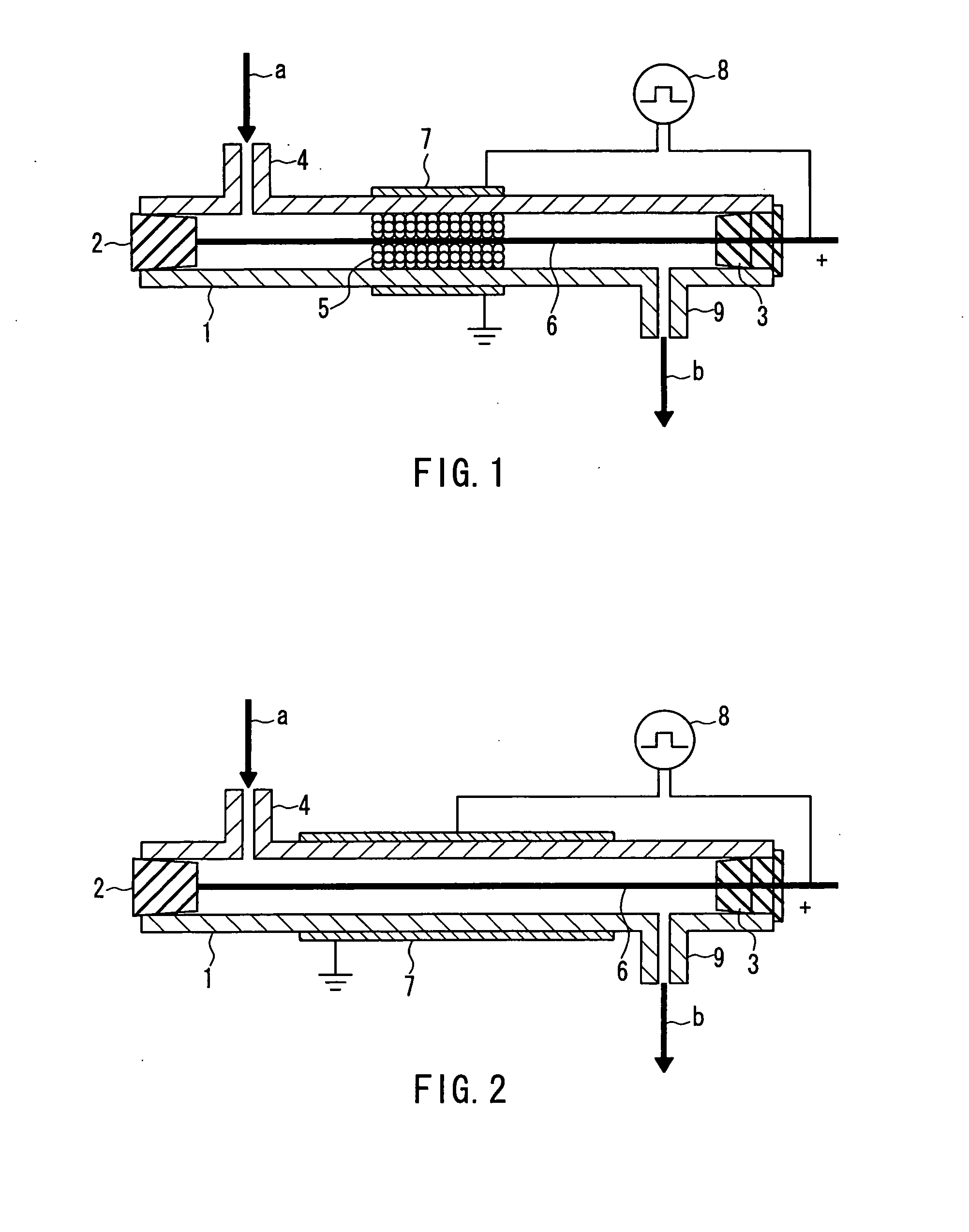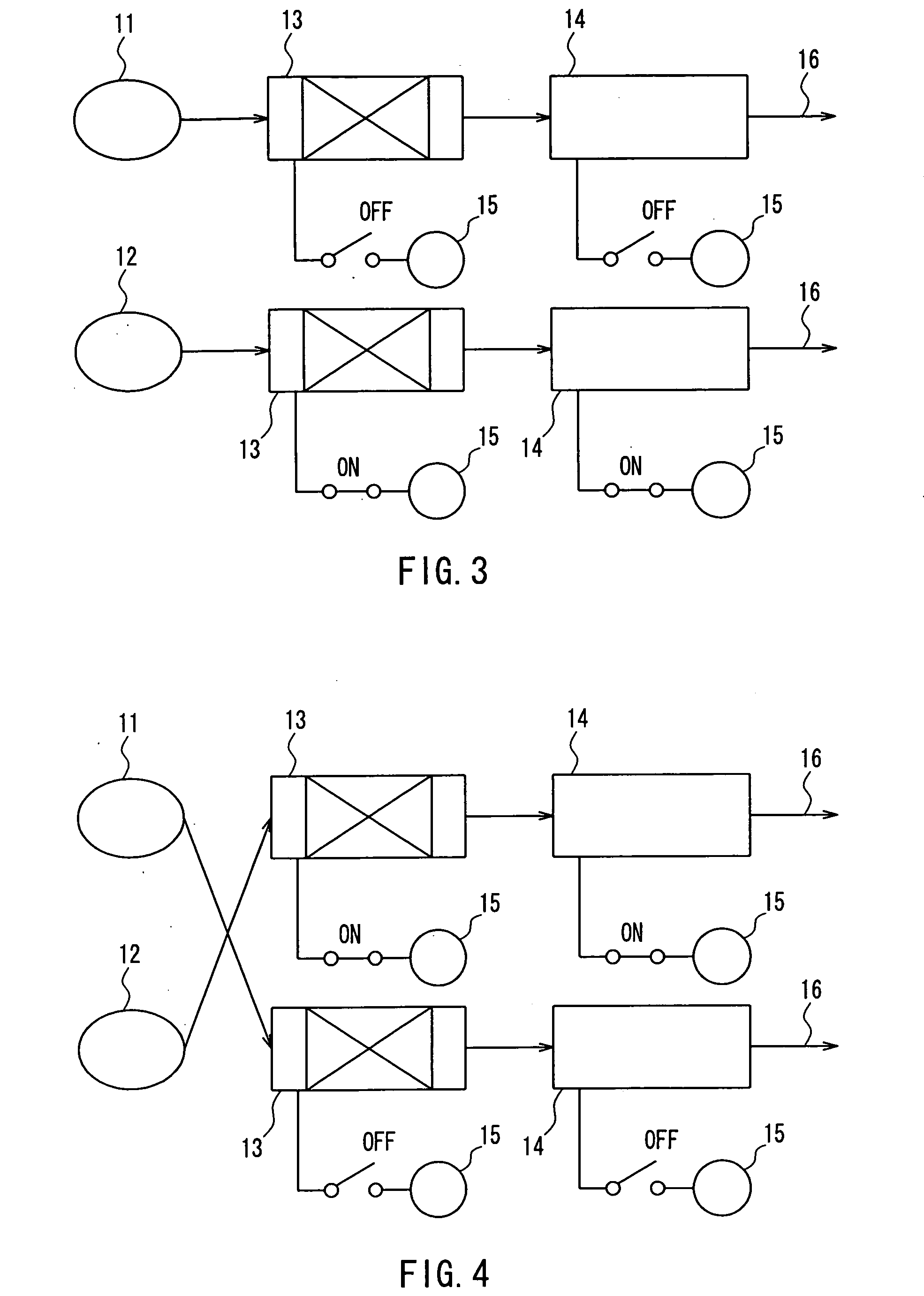Method and apparatus for treating exhaust gas
a technology for treating exhaust gas and exhaust gas, which is applied in the direction of combination devices, boron compounds, chemical/physical/physico-chemical processes based on energy, etc., can solve the problems of increasing the running cost, requiring a large amount of energy per unit concentration or flow rate to efficiently treat exhaust gas, and achieving high activity and removal of target components
- Summary
- Abstract
- Description
- Claims
- Application Information
AI Technical Summary
Benefits of technology
Problems solved by technology
Method used
Image
Examples
examples
[0079]FIG. 7 is a schematic diagram showing an experimental apparatus of this example. A dry nitrogen gas (with a purity of 99%, referred to as nitrogen in the following) 31, dry air (referred to as air in the following) 32, and a 2% dry NO gas diluted with nitrogen (referred to as NO in the following) 33 were mixed through three mass flow controllers 34 where the flow rate and the oxygen, nitrogen, and NO concentrations were controlled at predetermined levels. The mixed model exhaust gas passed through a three-way valve 35a, entered a plasma reactor 36 packed with unused zeolite adsorbent pellets (“MS-13X” manufactured by Merck KGaA), and then was adsorbed with the adsorbent. Subsequently, while nitrogen or air was introduced, a pulse high-voltage source 38 applied a voltage to the plasma reactor 36, so that nonthermal plasma was generated, and the adsorbed NO was desorbed. Moreover, the three-way valves 35a, 35b and 35c were opened / closed to allow the desorbed NO into a plasma rea...
PUM
| Property | Measurement | Unit |
|---|---|---|
| pore size | aaaaa | aaaaa |
| gas temperature | aaaaa | aaaaa |
| temperature | aaaaa | aaaaa |
Abstract
Description
Claims
Application Information
 Login to View More
Login to View More - R&D
- Intellectual Property
- Life Sciences
- Materials
- Tech Scout
- Unparalleled Data Quality
- Higher Quality Content
- 60% Fewer Hallucinations
Browse by: Latest US Patents, China's latest patents, Technical Efficacy Thesaurus, Application Domain, Technology Topic, Popular Technical Reports.
© 2025 PatSnap. All rights reserved.Legal|Privacy policy|Modern Slavery Act Transparency Statement|Sitemap|About US| Contact US: help@patsnap.com



